The NRL is entering the late stages of trials with ball-tracking technology that has the potential to eliminate forward pass errors — among many other possibilities for the game.
The current NRLW competition has been using technology-embedded balls created by UK-based company Sportable, the brainchild of three South African rugby fanatics who have spent the past six years refining the technology.
NRL.com spoke to Sportable's chief technology officer Pete Husemeyer from London as well as NRL Executive General Manager – Elite Football Graham Annesley about the trials, the implications of the technology and how close the NRL is to implementing the software.
How does it work?
The Steeden footballs are implanted with a piece of technology that weighs just a few grams. They contain an accelerometer, a gyroscope and a magnetometer that are charged via a cable and recycled once the ball reaches the end of its usability.
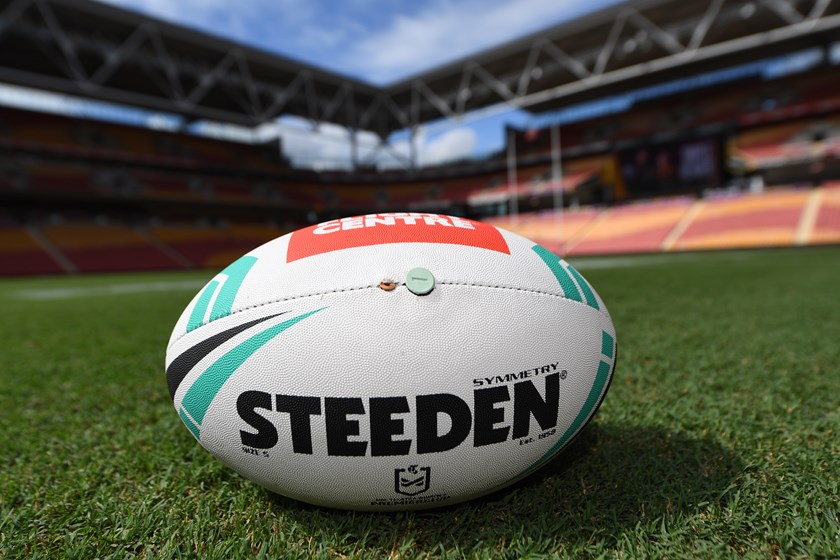
"We literally have a device for tracking them in 3D like radar," Husemeyer says.
We track it like we track a missile.
Pete Husemeyer, Sportable
"We know its exact position at every moment in time. Then we add to that the accelerometer and the gyroscope and the magnetometer."
The gyroscope measures the spin of the ball, which Husemeyer says is an important part of the equation, while the accelerometer is the same type of software in smartphones that measures speed and changes of direction.
"Using that real time data, we're able to infer the angle of the passer's hands as the ball leaves the hands," Husemeyer adds.
"If the player is running and their hands are angled sideways, the ball can still float forward with momentum but it's actually a flat pass.
The key thing isn't whether the ball went forward or not; the key thing is to know the angle of the passer's hands.
Pete Husemeyer, Sportable
In the average game, a majority of passes technically travel forward in the sense they are caught in front of the point they were delivered from.
Husemeyer says the technology can separate which ones were passed backwards from the hands and travelled forward with natural momentum compared to which ones were propelled forward out of the hands.
Why do we need it now?
Annesley recognises the forward pass issue has become a bigger controversy in recent times. With every game broadcast live, cameras are usually mounted close to halfway — creating a parallax error for passes closer to the ends of the field.
The key is that these passes are try-scoring chances.
Simply, the lines on the field make passes that leave the hands just before a line and are caught just after it look worse, even though often they are still passed backwards. There can also be times when a passer has been hit as he or she passes the ball, adding to the optical illusion because often the pass is caught well ahead of where it left the hands, and the passer has been prevented from travelling downfield with the ball.
"Forward passes have been a problem forever and a day," Annesley says.
"The path of the ball across the ground is irrelevant. It's about whether the player who releases the ball has released it in a backwards or flat direction."
Manly's final play raid called back for forward pass
Where is it up to now?
The technology has been in use in the NRLW for three rounds, with Sportable using those games to continue to build data.
By deliberate design, the NRL has not been seeing live results.
"A lot of what we do is based on the power of large numbers," Husemeyer says. "When we gather thousands of instances of punts or passes, your predictive power becomes better — especially with the forward pass.
"We're really looking forward to the results from that.
"We're doing a comparison analysis where the refs will call all their forwards, we'll call all our forwards, and we'll compare notes afterwards. What we'll learn is how well the referees stand up against the forward pass data."
Addo-Carr denied by a forward pass
Neither Husemeyer nor Annesley expected the trial to come back with the technology picking up a huge number of missed forward passes, but if that were to be the case the technology can be adjusted.
For example, an extra margin of acceptability of one, two, five degrees can be added in.
"That's the final component, we have to decide how and when to use it," Annesley says.
"Our game is based on continuity. We don't want to be pulling up things that don't look like forward passes and causing unnecessary stoppages.
"We need to develop policies for its use that won’t unduly interfere with the flow of the game and the entertainment value for fans.
"For example: should we only use it in try scoring movements, or throughout the entire game? My gut feel is we would probably apply a similar process for forward passes as we currently do for other bunker decisions.
"Do we really want to be stopping a game for a pass that's going one or two degrees forward or are we looking more for the ones that are 10 or 15 degrees forward —ultimately these are policy decisions for the Commission to determine."
How will the ball itself behave?
Husemeyer is convinced the players wouldn't even know they were using a Sportable ball unless they were told — information which has been supported throughout the NRLW competition so far this year.
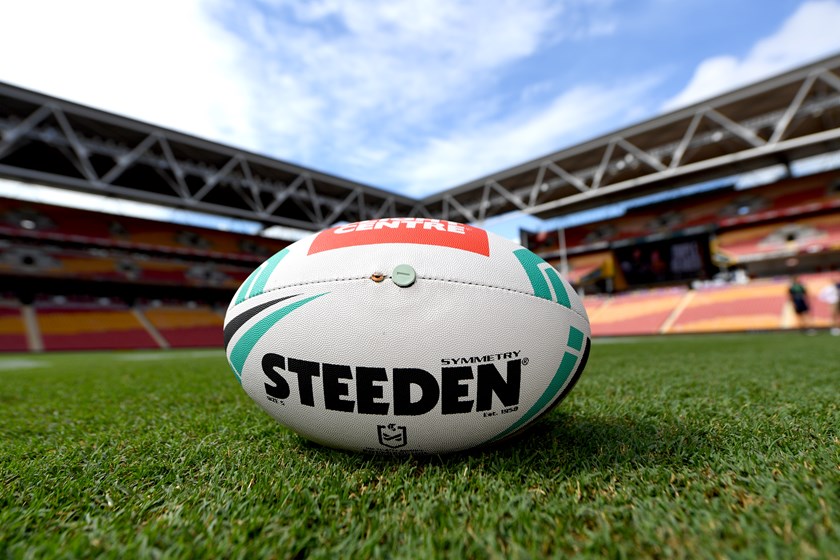
Sportable has spent years refining the technology to make sure it is centred within the ball and does not affect the way the ball behaves.
"It's only a few grams and it's taken us six years to get right," Husemeyer says.
It's literally like putting a tiny computer inside the ball.
Pete Husemeyer, Sportable
"It was quite nerve wracking trying to get the ball through 80 minutes of play, but we're confident. Part of that process has been about making the electronics resilient and tough but the other part is athletes are the most unbelievably, finely-tuned detectives of difference."
Remarkably, even the sound the ball makes when kicked is accounted for.
"In sports science they call it the acoustic feedback mechanism. The primary mechanism for athletes to gauge how well they did at something, and it's true in golf, a lot of sports as well as rugby, is the acoustic response. As soon as you strike the ball, how does it sound to the ear?
"You can tell if something wasn't right with the strike from the pitch without even looking at where the ball was going.
"There were all kinds of fascinating sports science problems we had to solve from the acoustic response, getting the exact weight of the ball correct was a difficult manufacturing problem that we solved and the other one was just the flight dynamics and getting the weight distribution correct because you want the ball to spin the same way as the Steeden we know.
"It's been a proper challenging manufacturing and engineering project and sports science project that has been super fascinating."
How will it be used in-game?
Getting the players on board is one thing; getting the public is another.
Annesley says he hasn't yet landed on exactly how the information will be relayed to referees in-game, nor on exactly how it will be presented to fans because the immediate challenge has been ensuring the technology works.
"We've made a lot of changes in the modern era to try and increase the speed, flow and entertainment value of the game," Annesley reflected.
"The more you allow technology to intrude, the more you move away from that.
It's always about finding the right balance between correct decisions and the intrusion of technology.
Graham Annesley, NRL
"The issue of forward passes it one of the few remaining areas of the game where there can be judgement errors that can have a big influence on the outcome of the game."
There are several options for use.
If the technology picks up a forward pass, it can instantly relay that to the Bunker or on-field referees. We may get to a point where it does that for all forward passes.
In the shorter term, it may only be used when checked in try-scoring situations.
Murdoch-Masila scores as confusion reigns
"Then we have to look at how we present it publicly," Annesley adds.
"We might have to build technology like ball tracker in cricket or Hawkeye in tennis to demonstrate to people watching games that it was or was not a forward pass.
"It's all very well to have the technology but if people don't understand how it was used to arrive at that decision, they won't accept it. That's the next step in the process, once we are happy with the results of the trials."
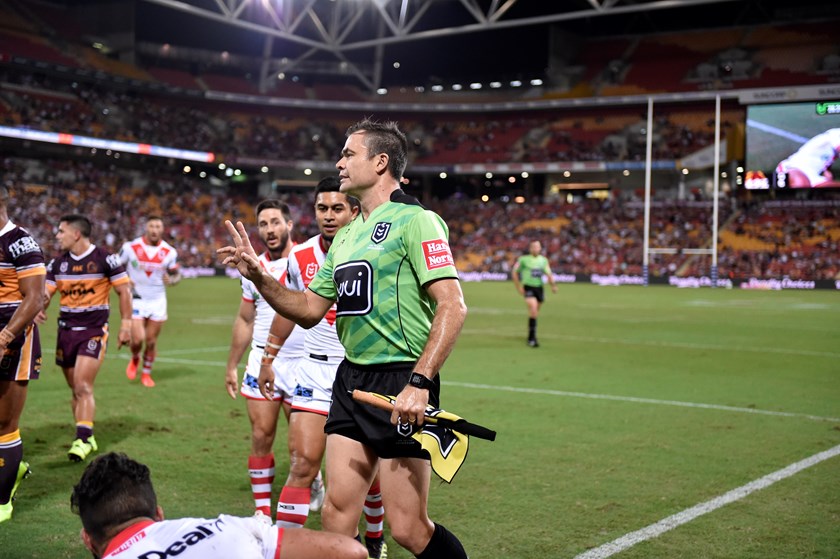
Husemeyer anticipates an automated alert straight to the ear of the referee could be the best solution.
"They will get in their ear and ultimately it will be down to the ref to decide what to do in the moment," he says.
"They have the most experience and understand when to interrupt the flow of the game and when to make a decision and they are the logical choice for when to implement the technology.
"The refs may eventually like and trust the technology enough that they prefer we just go live with it so they can worry about other things.
"They key with the forward pass; it needs to be quick. Then it can become part of the game and you don't have tries being taken away later."
The challenge? The classic, "flat" pass.
"When we compare technology to the average member of team Sportable, of course there are discrepancies because there are borderline cases and they are the tough ones," Husemeyer says.
"It also gets more difficult when a passer is tackled as they pass. That is difficult for a referee to determine because they are running relative to the action so there is the relative velocity problem and error parallax.
"Those tend to be the most difficult to call and those are often just called forward because it's so obvious the ball has travelled forward."
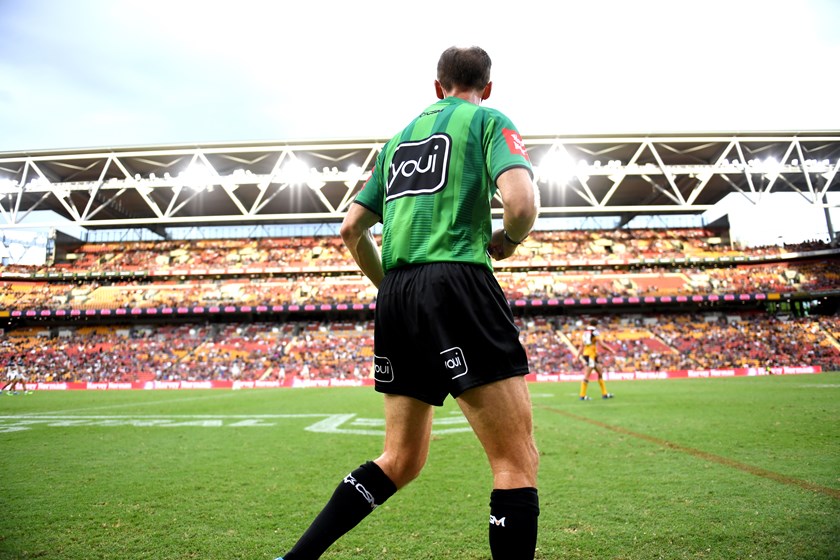
The business case and benefits
Any decision on the implementation and use of the technology will ultimately come down to the ARL Commission, but there is plenty of upside beyond just forward pass adjudication.
Because the technology can tell where the ball is at every moment in a game, it can tell whether a 40/20 attempt has crossed the sideline either side of the 40-metre line. It can tell whether an attempted try has reached the try-line or not.
Whether a ball bouncing over the corner post found touch or went touch-in-goal.
Whether an attempt at goal that went over the upright was just in or just out.
Importantly, potentially game-deciding moments.
"The next step in the process for us is to verify the data from the trials, then present the results and a business case to the Commission before we think about if and when it might be applied to the Telstra Premiership," Annesley says.
"We'd like to move as quickly as possible but we have a few steps to go before we get there."
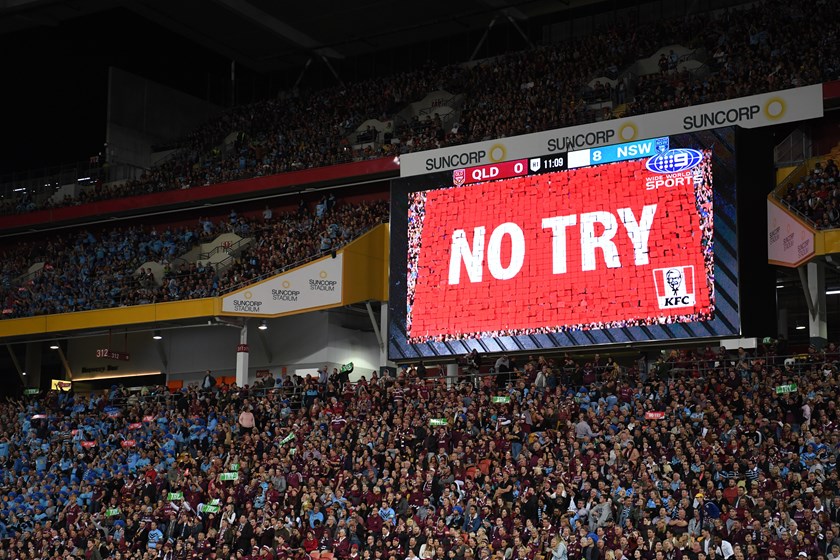
What will it look like for fans?
"The technology has a wide variety of other data that can be provided for fans, broadcasters, other media outlets and high-performance coaching purposes," Annesley says.
"Statistical information like hang time of kicks, direction and speed of passes, rotation of the ball, the distance it travels during a game, and a whole range of other data that can be applied to high performance coaching.
"That can be very beneficial to the entertainment value of the game and also provide a broad range of commercial opportunities – because a lot of that data is extremely valuable.
"People are absolutely hungry for data. There are endless opportunities in terms of commercialising the data, in broadcast, on NRL.com, with sponsors and other game partners.
“There's a whole range of opportunities we could leverage to increase fan engagement with the game."
Husemeyer is also excited about the applications for bringing more data to fans.
"What we're really trying to do is make the game better for fans," he says. We want to make sure the technology is used in a way that the fans enjoy, that speeds to game up.
"We don't want referees overburdened with decision making or constantly going back to replays because even the replays suffer from parallax, and you have to hope one camera is at the right angle."
There are all kinds of specific data that can be gathered around individual player performances or moments in games that could enhance broadcast coverage and fans' understanding of the sport.
"You can look at the [halfback] and see which side they prefer passing off: is there an obvious discrepancy passing left or right?" Husemeyer provides as an example.
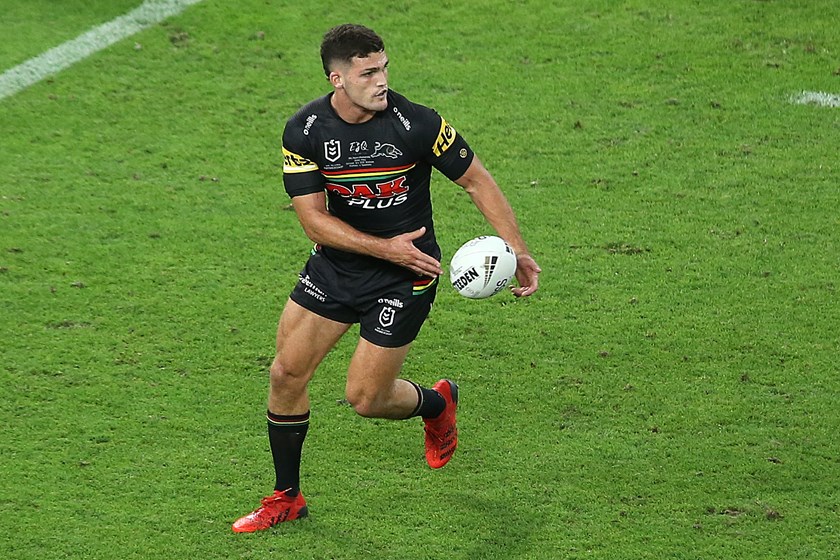
"Is there an obvious distance of pass discrepancy? Are average passes off their weak side two metres shorter? There are situations like this you don't notice with the naked eye, but it really comes out in the data. I think even they'd be surprised sometimes how much they outperform on one side.
"We can look at how well the pass sits for the player. If they have to slow down or speed up onto the ball, scoop it up or get it right in the breadbasket.
"We'll be layering these insights over the next few seasons so it's not a tidal wave of information. It needs to be worked into the game in an interesting and natural and insightful way, so we don't overwhelm anyone with the data.
"The key is having enough data. We're putting together wonderful data sets we'll be able to use to enliven the women's game and the men's game.
"This is the first trial of the forward pass tool in the world... and we're keen to scale it out and really throw some resources at this thing to bring new and engaging data to life.
"We are here to answer the questions fans are already asking."

